Organizing a playroom – 11 ways to make tidying child’s play
Organizing a playroom properly is the best way to spark creative play, not to mention keep on top of tidiness. Here’s how
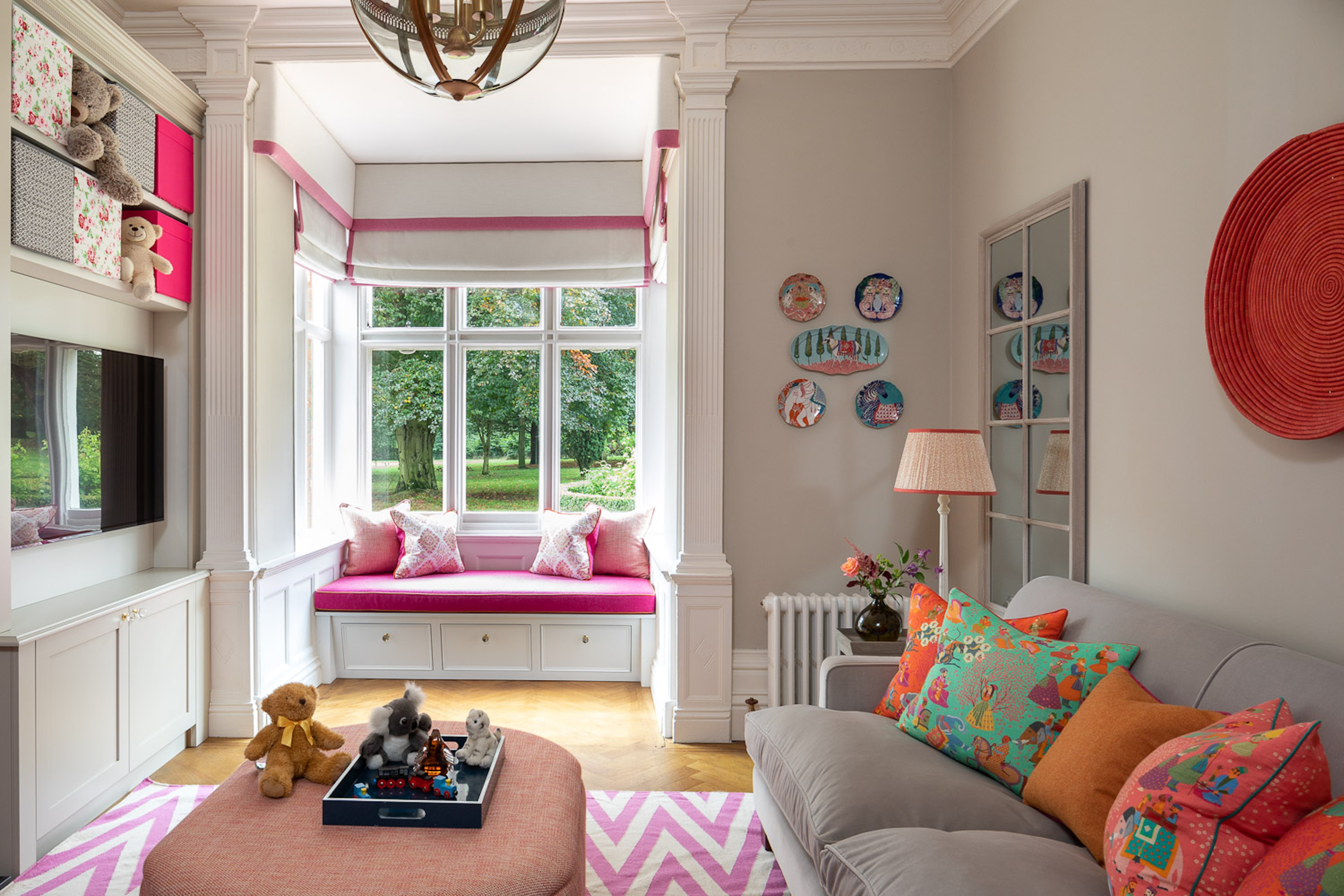
A space dedicated solely to toys, kids’ crafts, books and games is bound to get a little chaotic from time to time but knowing how to organize a playroom efficiently can make all the difference. We’re not saying it won’t get messy, we are talking child’s play after all, but it will make it easier to keep on top of things.
Clutter can build up fast, ruining the carefully curated aesthetic of your playroom ideas, so accessible playroom storage ideas and toy storage ideas are essential. Alongside, of course, with understanding how to organize toys properly.
Don’t forget to factor in some fun to playroom organization, too; the more imaginative and colorful your solutions and kids’ room ideas the better – it’s the one room in the house when you can let loose, so make the most of it!
Whether you have an entire room dedicated to play or you’re looking for ways to integrate toys into your communal living space, we’ve gathered expert advice from professional organizers, designers and play experts to help you maximize the feel-good factor in your playroom.
How to organize a playroom
According to professional organizer Vicky Silverthorn of You Need a Vicky, the key to organizing a playroom is to cut back and keep it simple.
‘If your system is too complicated, or has too many steps, kids (and adults!) won’t stick to it. We all like to spoil our children with lovely things, but too much choice and decision can cause them to become overwhelmed and lose interest more quickly’, she says.
However, it’s important to remember that just like when you are organizing a bedroom for adults, a child’s things often hold a great deal of emotional significance. ‘When making any changes to a playroom, be sure to involve your child in the process so they feel like the space is their own’, advises Grace Tindall, founder of Scandiborn.
1. Categorize items

Before you begin organizing a playroom, Lauren of Simply Well Balanced recommends sorting playroom items by category. ‘This is probably the easiest way to get started, gathering all the dolls together, all the cars, craft materials and so on. It makes it easier to see exactly how many of each item you have and what you might be able to get rid of during the organization process’, she says.
Keeping toys in these categories within your playroom is a great way of ensuring children can find what they need quickly and easily. Stick to generic categories, such as ‘vehicles’, rather than ‘fire engines’, ‘police cars’ etc; if you make it too specific, children will get frustrated; you can always expand the categories as they grow’, says professional organizer and founder of Sort Well Organizing Co., Julie Onstot.
2. Take a ‘less is more’ approach

While it may seem like a sensible idea to pack a playroom full of toys, research has shown that too much choice can disrupt children’s creative play. So a playroom declutter is essential, not just for the purposes of keeping it well-organized, but to promote enjoyable, quality play time for your little ones.
With everything laid out in categories, decluttering becomes much easier. Start by donating, recycling, or getting rid of any broken toys, then move on to reducing the number of duplicates you likely have.
‘It’s okay to have lots of coloring pens if they’re being used all the time, but if you have three similar board games – the only difference is the visual aspect – then choose the one your children play with the most and let the others go. Adopt a ‘one in one out’ system going forwards so the room doesn’t become overloaded again’, advises Sian Pelleschi, APDO Conference Director and founder of Sorted!.
While you can declutter on behalf of children under three, older children should be consulted: ‘if you’re donating items, explain the importance of sharing and giving; donate toys to charity shops, nurseries or family centers so your kids know they’re going to make other children happy’, says Vicky Silverthorn.
3. Opt for open storage
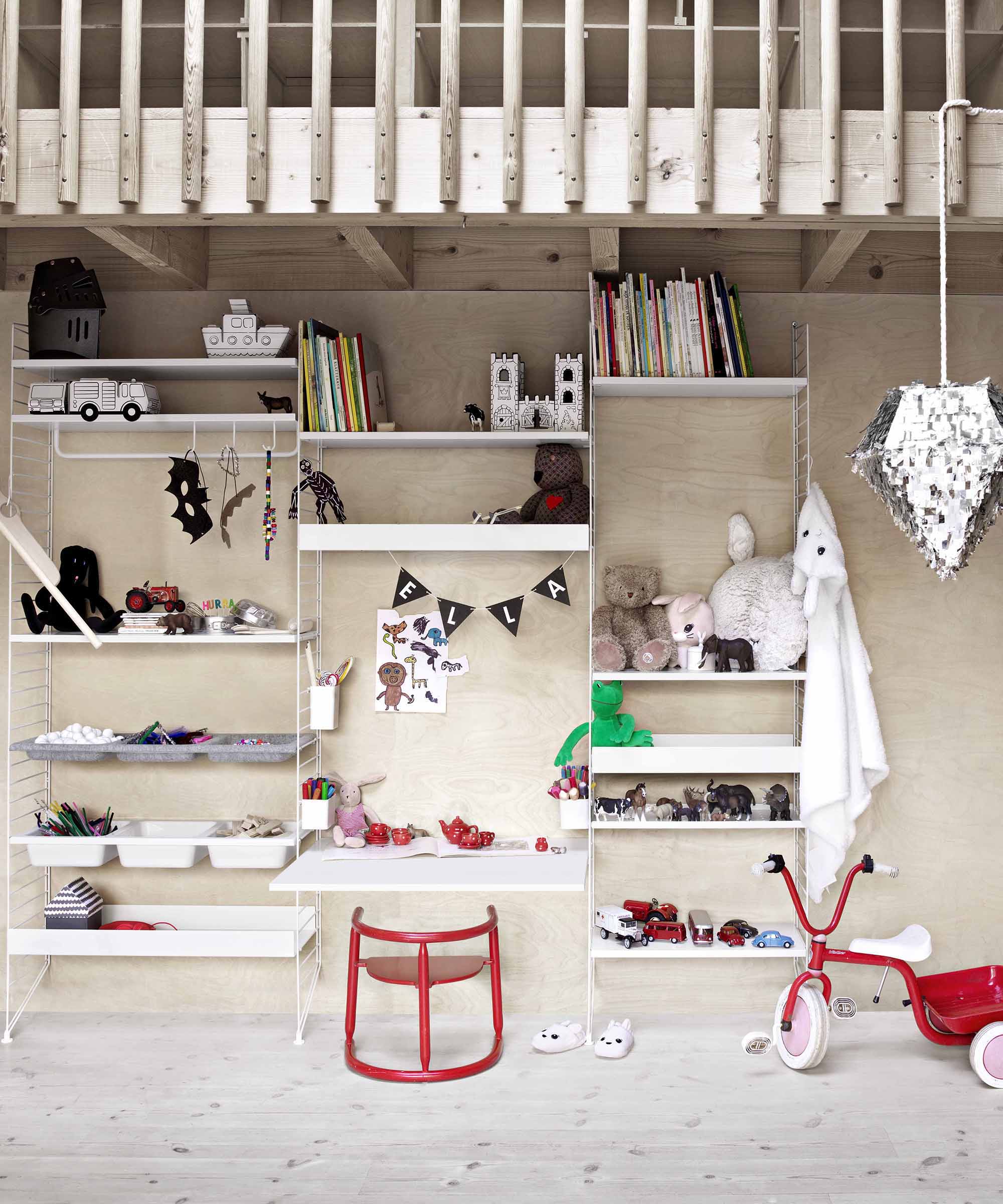
Getting your children to return toys to their rightful homes is always going to be a challenge, but there are ways to make it easier.
‘Use open storage where you can’, says Lauren, founder of Not a Boring Box. ‘Baskets with handles are great as they’re easy to pull out and your kids won’t have to struggle with lids. Best of all, they can literally throw it all back when it comes to tidy up time’.
Sian Pelleschi also recommends choosing clear containers where possible to encourage varied play. ‘The phrase ‘out of sight, out of mind applies; if children can see what’s in a box they’re more likely to play with it’, she explains.
You can look to bedroom organizers and clothes storage ideas for inspiration here. Even shoe storage ideas can be a useful size for playroom organizing.
4. Use labels
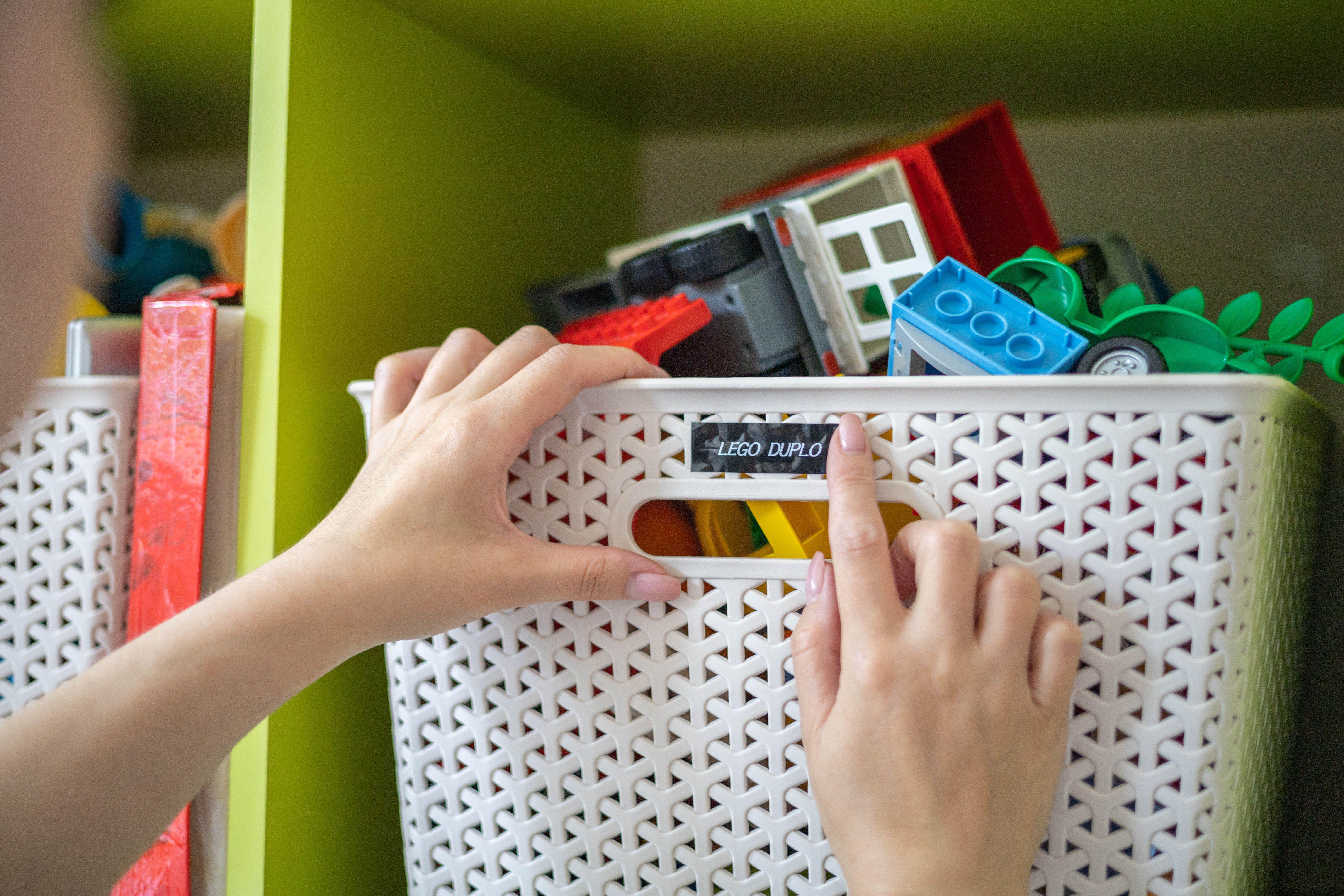
The best organizational systems always include labels. This is the case whether you’re organizing for adults or for children, however, age will play a part in deciding how you go about your labeling. If your child is of reading age, label storage clearly and concisely so they know where things belong. Adding a picture can help them to recognize the words – a train on the train box, for example – and means younger siblings can join in, too.
Kids' toy preferences often change as they grow, so opting for removable labels is a good way of futureproofing your playroom organizational system – that way you need only update the labels, rather than the whole container.
5. Consider accessibility
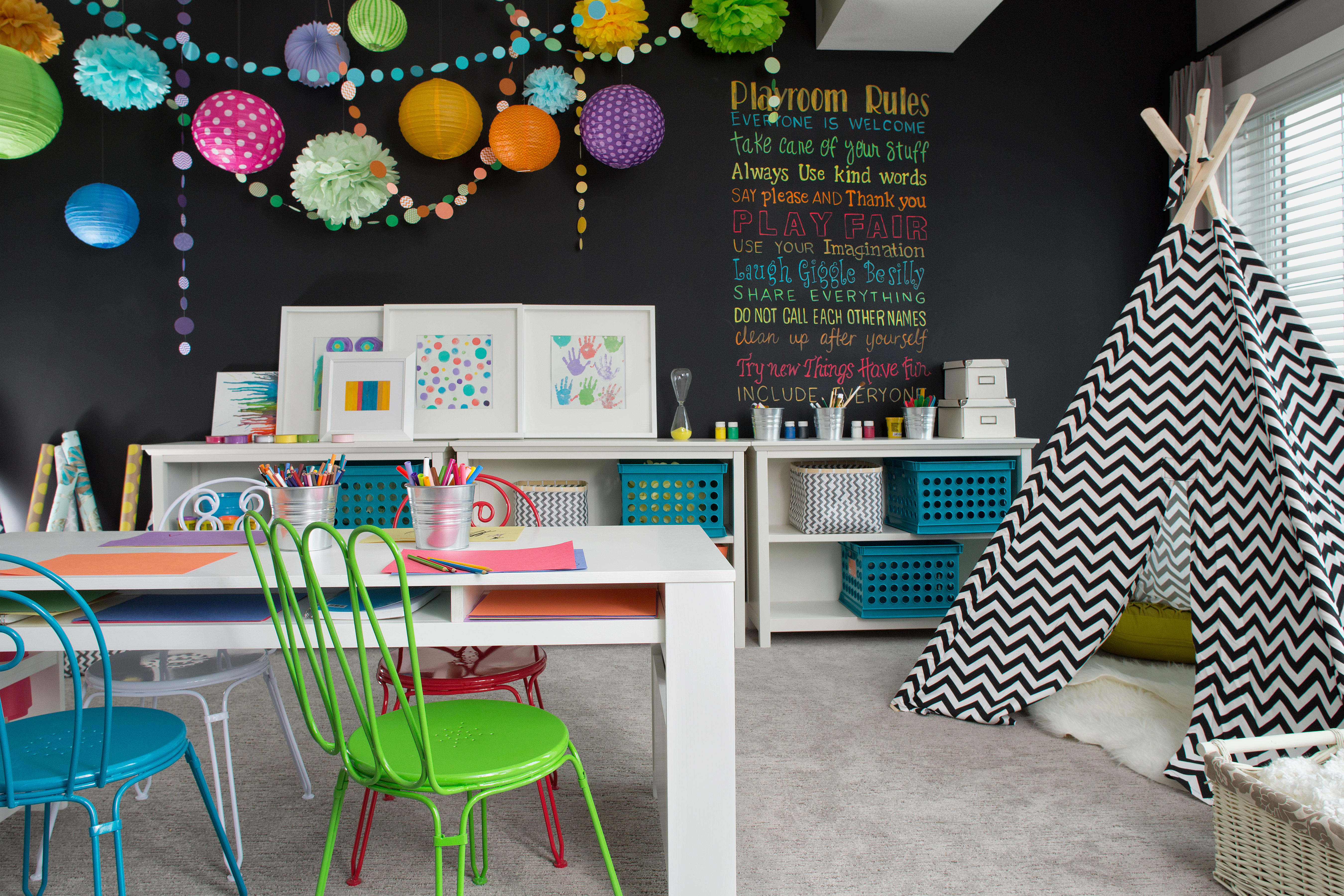
Just as when you are organizing a closet, think accessibility. Reserve low-level storage for favorite toys and games (that are safe to do alone) so that children can get to them without your help.
This encourages independence and saves you running back and forth all the time. A mix of pegboards, shelves, cubby holes and pull-along storage makes everything accessible.
In a similar vein, there are certain toys that are best kept out of reach until a time when you’re around to supervise – tricky puzzles, messy craft sets, water or sand play, and so on. This is also something to bear in mind if you have children of varying ages who share one playroom; anything unsuitable for your youngest should be stored safely away.
6. Combine function and form
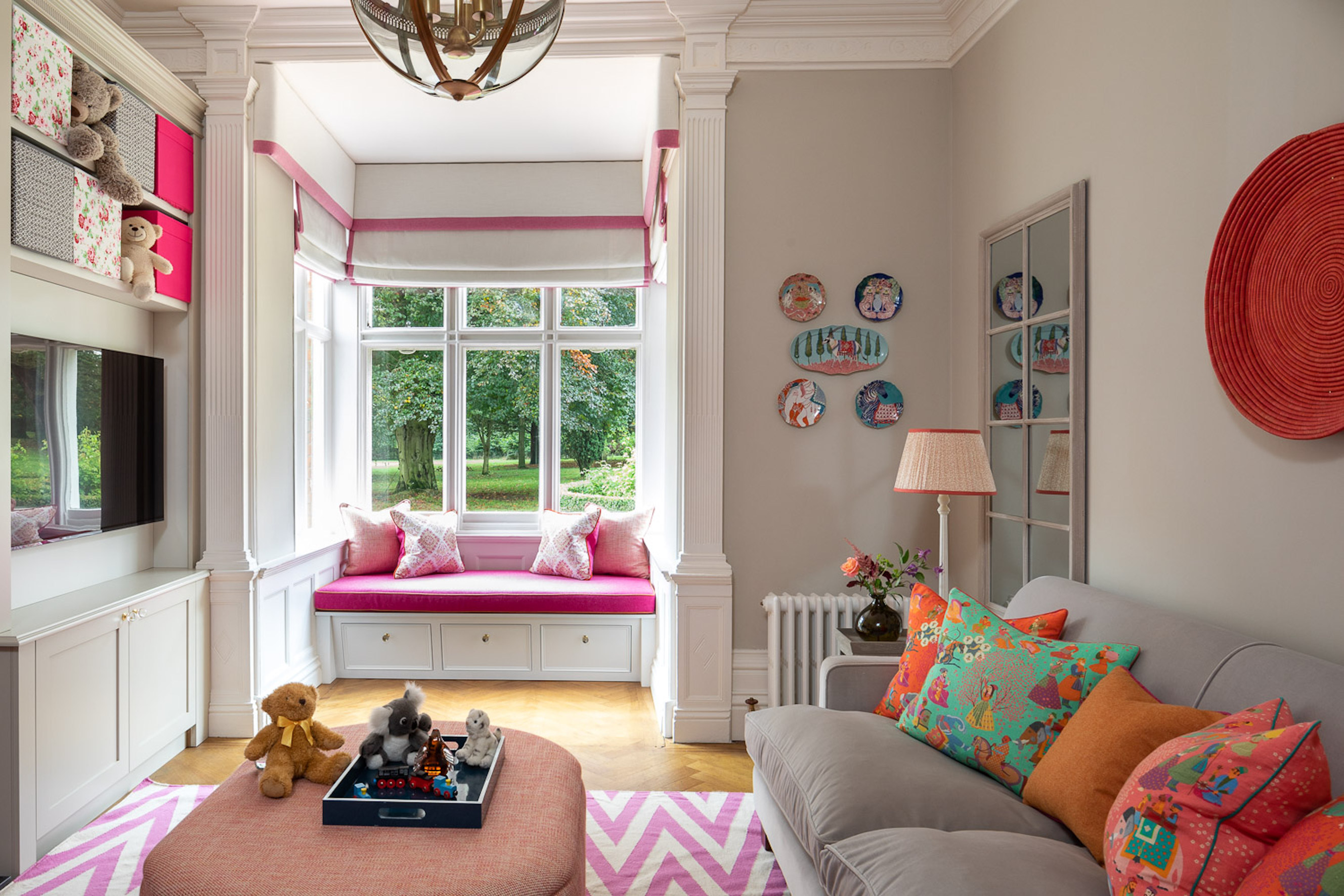
If your playroom is part of a communal area in your home, perhaps you are looking for family room ideas and playroom organization is a factor, it’s worth giving a little more thought to your storage choices. As well as practicality, factor in good looks – a stylish buffet can hide all manner of toys while blending in beautifully with your room décor, for example.
To ensure the space remains practical for all its requirements, Alex and Kris Tolofson, directors and founders of Noa & Nani, also advise looking for versatile furniture items that serve a dual purpose. ‘Cube storage which doubles as a seat, for example, or a desk – not only does this provide a helpful surface for books, gadgets or arts and crafts, but the integrated drawer provides another discreet space for storing toys’.
‘Another option is to look at storage boxes on wheels’, adds Irene Gunter, founder of Gunter & Co. “These are effortless to move around when you want to switch up the space’.
7. Zone your playroom
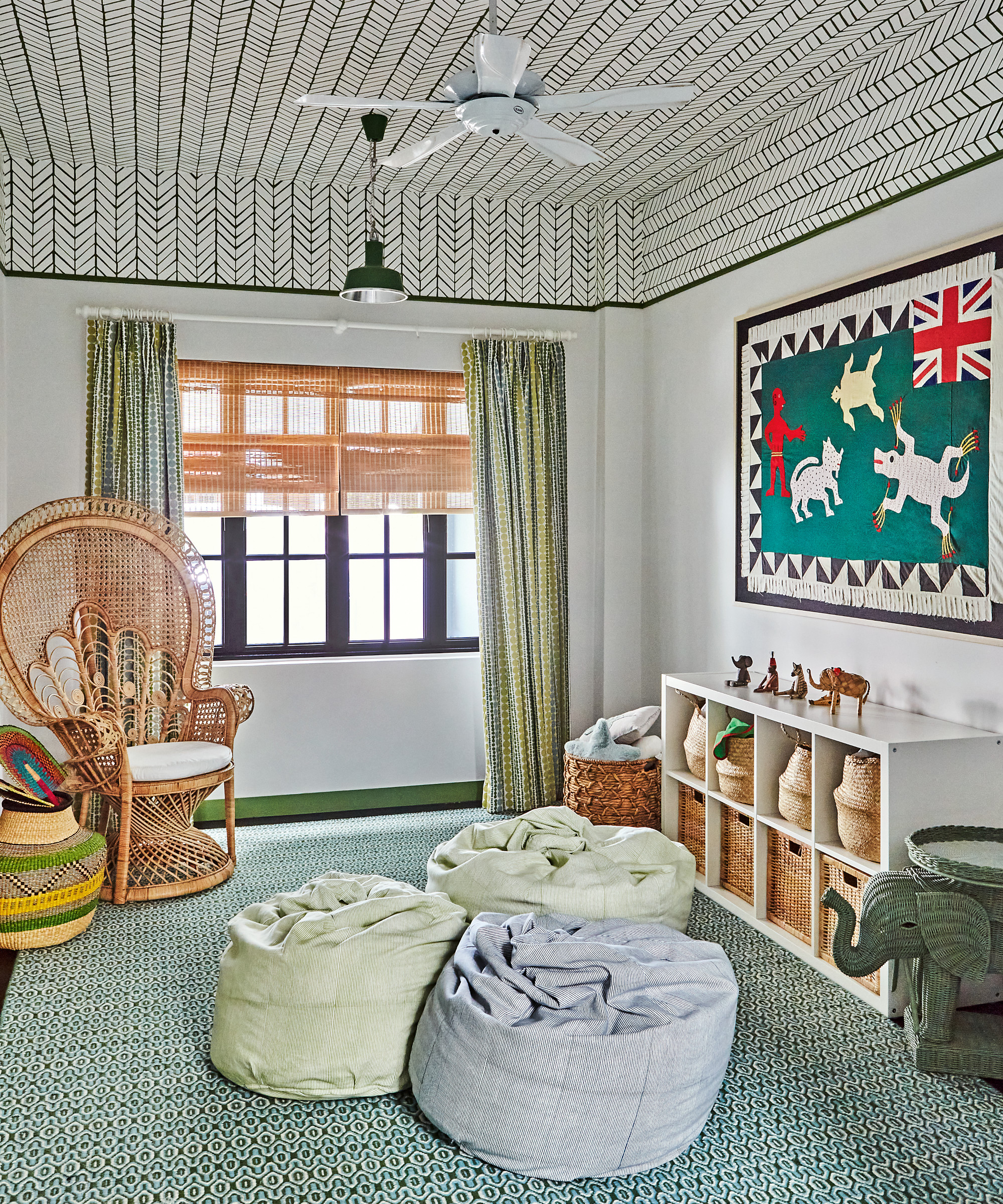
In the same way you would when organizing a small bedroom, think about how your little ones use the playroom and arrange items accordingly. This is particularly important if the room is being used for other tasks – a home office or spare bedroom, for example.
Designating areas for playing, reading, creating, winding down and so on gives structure to the room, plus makes it clear what belongs where, which should help you stay on top of organization going forwards, too.
8. Keep surfaces clear of clutter – most of the time
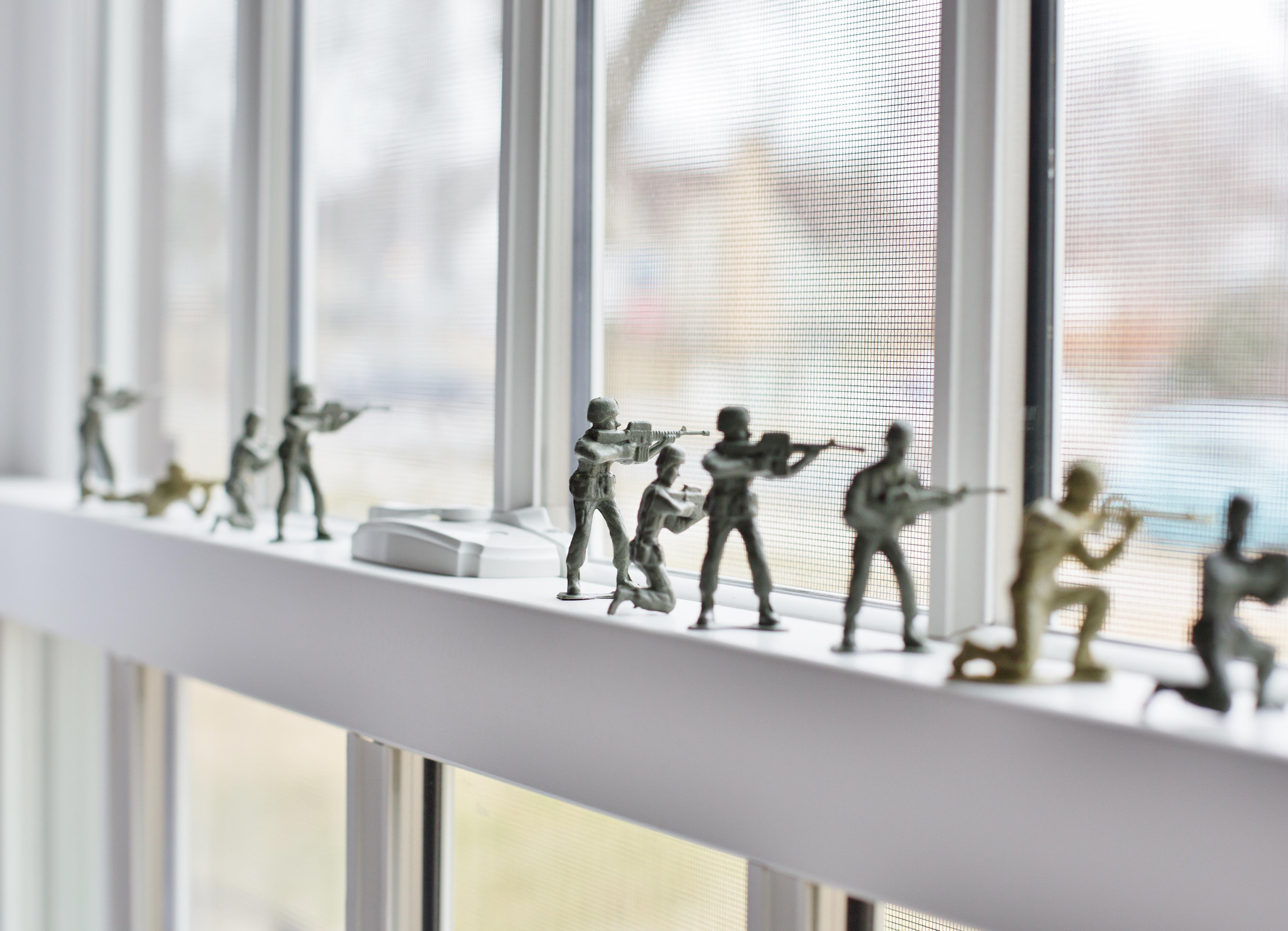
‘Playroom tables are prone to clutter, so it’s important everything has a home at the end of the day – any items that are out on surfaces need a reason for being there’, say the home experts at Hillarys.
Doing this not only makes the room look neater but makes the essentials you have out easier to find – stationery for homework, for example. Corralling smaller items into boxes will instantly make them look organized.
However, whilst tidying toys away makes for a more organized playroom in general, it’s worth bearing in mind that artistic arrangements can add aesthetic value to the room. A selection of dinosaurs positioned across the top of a storage unit or shelf, for example – nice to look at, and easy to access. If you do go down this route, it’s worth remembering that having toys out on display is an ongoing commitment if you want the room to look tidy.
9. Create a seating plan
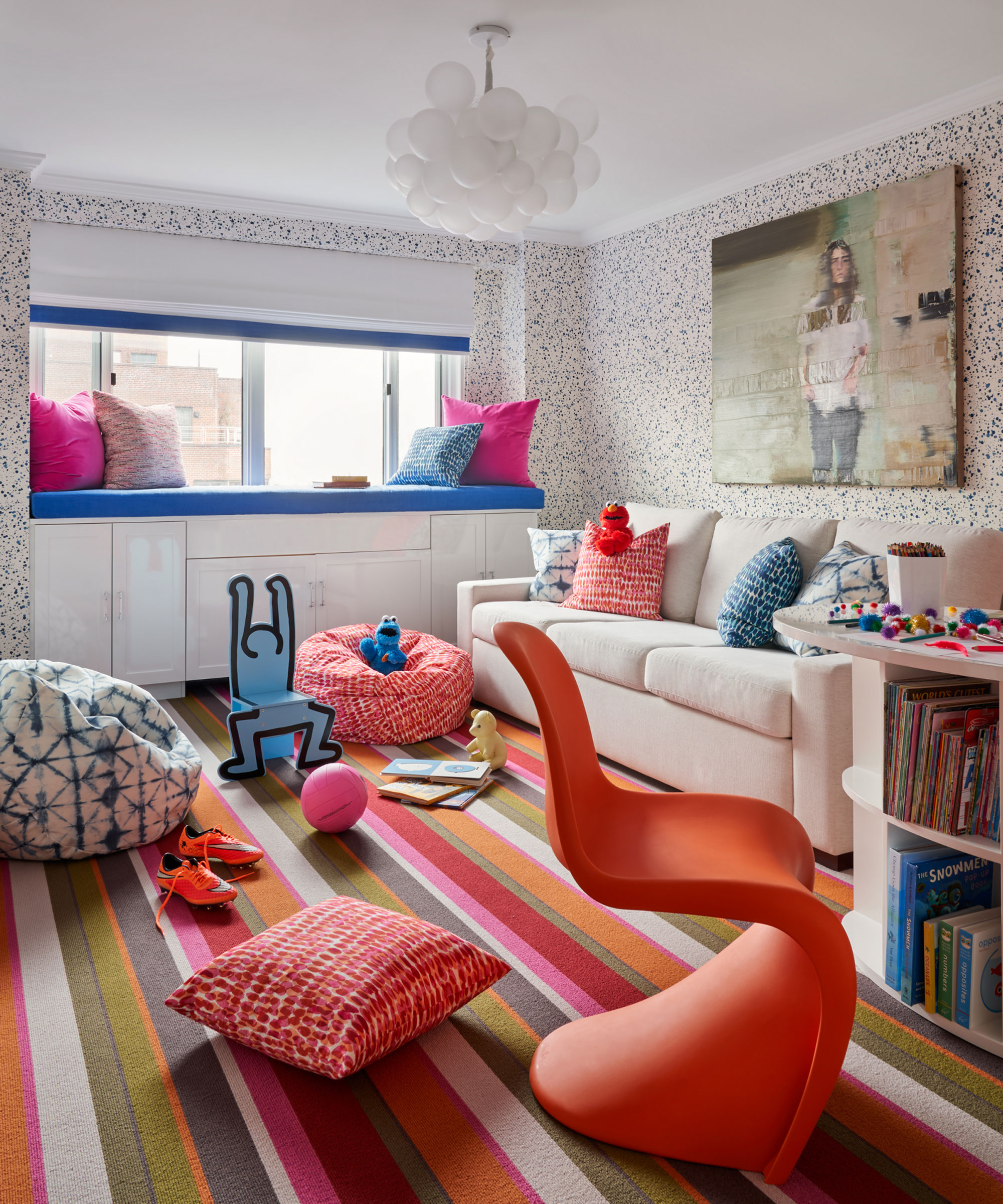
If you want your little one to stay still for longer than 30 seconds, comfy seating is essential. Beanbags and floor cushions are a practical alternative to solid chairs, as children can drag them around easily without scratching the floor. If you’re including an upholstered sofa or armchair, it’s a good idea to choose one with removable, machine-washable covers so you can relax about spillages.
10. Set up a reading corner
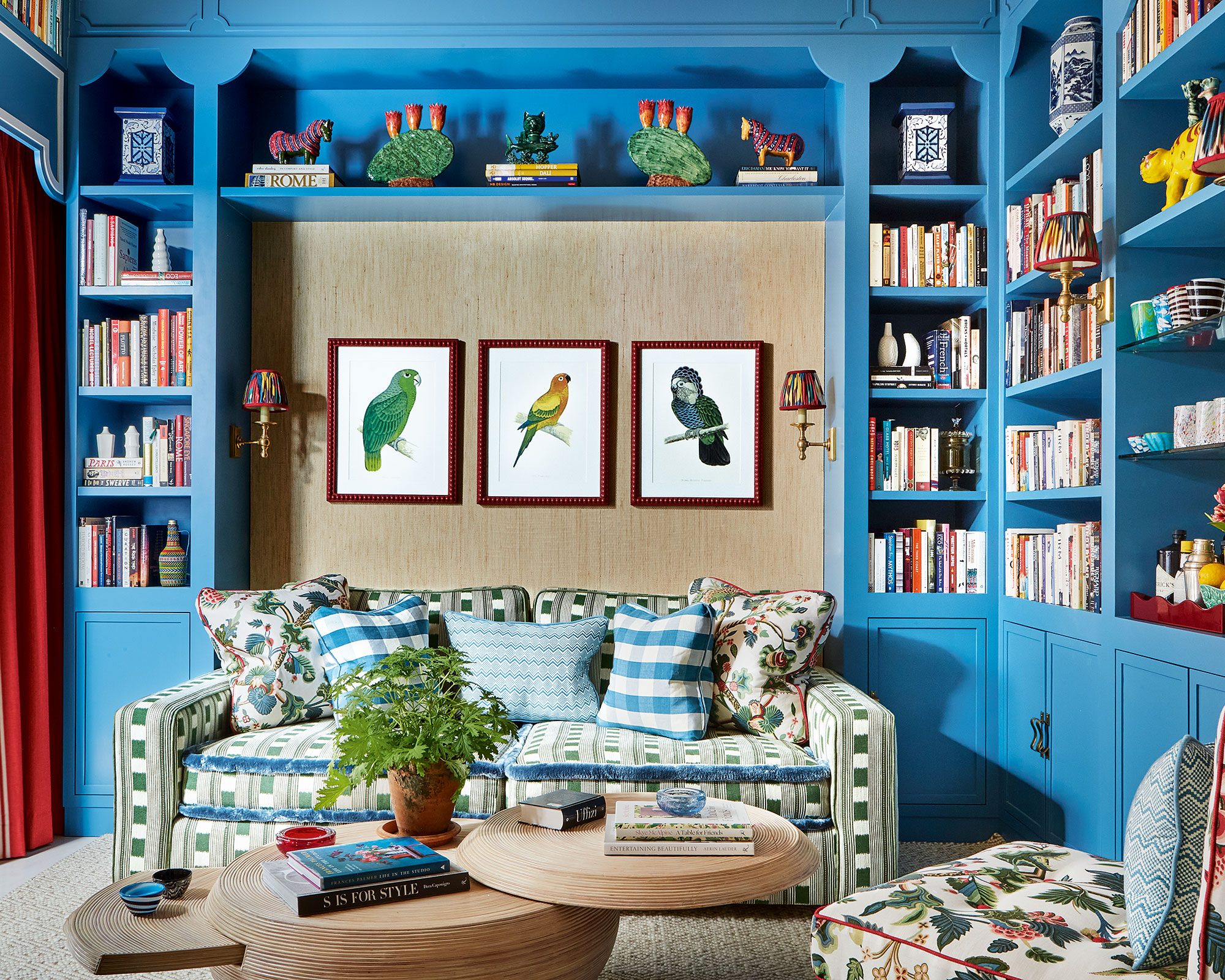
Books should be an essential part of your child’s day to day, so it’s worth considering reading nook ideas and dedicating a space in a playroom solely to story time. Just like with toys, children can become overwhelmed when confronted with too much choice, so don’t forget to include books in your decluttering process.
When it comes to bookshelf ideas in a playroom, ‘front-facing bookshelves look tidier than traditional bookcases and are easier for children to use, assuming they’ve been mounted at an appropriate height. Vibrant cover illustrations not only add to the room’s décor, but also encourage children to pick up a book and read’, says Laura Rich, product developer at Furniturebox.
When organizing a bookshelf, arranging by color not only makes for an attractive display, but also gives children independence when it comes to their book collection.
‘Color coordinating your bookshelf means your child can easily put things back. It also means they can find their favorite book without pulling everything out – even before they can read, they know what color their favorite book is’, says Kathryn Lord of More to Organising.
11. Revisit playroom organization twice a year
'I always found when organizing my children's playroom that having a clear-out twice a year helped keep things under control,' says Lucy Searle, Editor in Chief, Homes & Gardens.
'I tried to schedule in a pre-Christmas declutter, usually before I had started Christmas shopping, so that I didn't double up with gifts, and then again when they finished school for the summer. I'd ask them to get everything out and identify anything they didn't play with any more, then those would be donated or passed to friends with younger children. We did the same with clothes and shoes, too.'
How do you organize and declutter a playroom?
Keeping a playroom tidy is a constant battle for parents but organizing and decluttering is the first step towards making it easier. Start by gathering everything together and sorting into categories; ‘vehicles’, ‘dolls’, ‘drawing’ and so on. Next, assess each category and set aside broken toys, or any that your child has outgrown, to be fixed, recycled or donated (be sure to include older children in this process). Next, look for duplicates. Try to limit to just a few types of each toy and donate any extras.
When putting things back into the room, think about how your children use the playroom and assign zones accordingly. Reserve lower-level storage for favorite toys and store others that need adult supervision – messy craft sets, tricky puzzles etc – out of reach. Opt for open, clear storage and label every container so your child can find what they need, and more importantly, put it back again once they’ve finished playing.
How do I organize playsets?
For larger playsets, dedicated baskets, boxes and bins work fine – just be sure to label them clearly so children put the pieces back in the right place. Anne Marie Cousins, interior designer and founder of AMC Design recommends using color to help them along: ‘I find that children respond really well to color, so try allocating categories to colorful baskets or boxes to make it easier for them to remember what goes where’, she says.
Zip wallets are a great space-saving option when it comes to storing smaller sets – think Lego, puzzles, travel games etc. You can slot several into one drawer or cubby hole by implementing the file and fold method, more commonly associated with organizing drawers: ‘place them vertically, a bit like how you would keep papers in a filing cabinet’, says Emma George of Declutter with Emma.
Sign up to the Homes & Gardens newsletter
Design expertise in your inbox – from inspiring decorating ideas and beautiful celebrity homes to practical gardening advice and shopping round-ups.
For 10 years, Tara King worked as a Content Editor in the magazine industry, before leaving to become freelance, covering interior design, wellbeing, craft and homemaking. As well as writing for Ideal Home, Style at Home, Country Homes & Interiors, Tara’s keen eye for styling combined with a passion for creating a happy – and functional – family home has led to a series of organization and cleaning features for H&G.
-
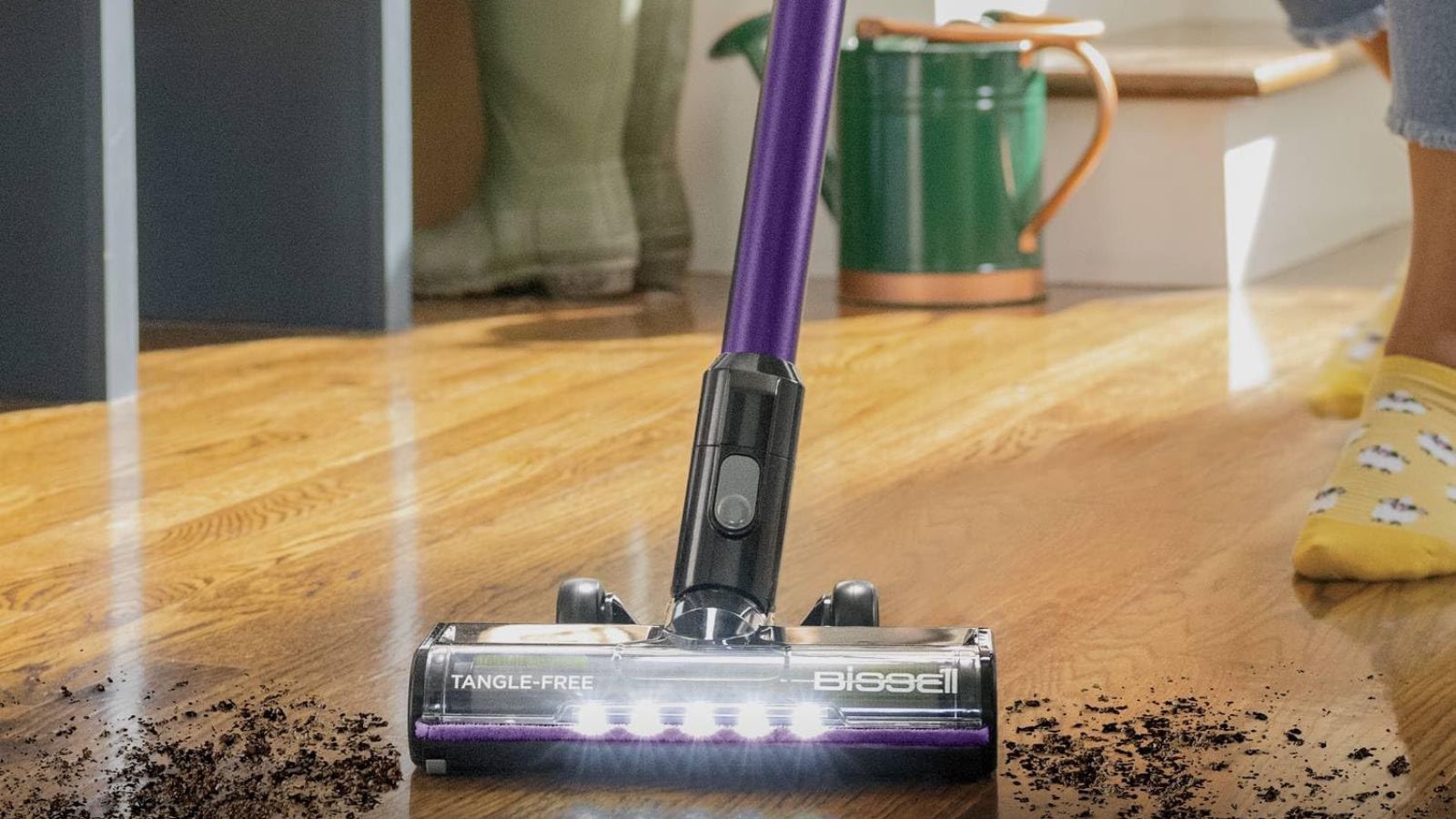 Bissell CleanView XR Pet 300W Stick cordless vacuum review – it's a great budget vacuum, but by no means perfect
Bissell CleanView XR Pet 300W Stick cordless vacuum review – it's a great budget vacuum, but by no means perfectLow price point, but with the cleaning performance to match it
By Camryn Rabideau
-
 Kevin Costner uses the 'ultimate color choice for interiors' in his kitchen – it masters a top 2025 trend that's 'guided by the calm of nature'
Kevin Costner uses the 'ultimate color choice for interiors' in his kitchen – it masters a top 2025 trend that's 'guided by the calm of nature'The Yellowstone actor embraces a subtle yet soothing trend that's influencing how we decorate this year, but it will look just as perfect in 100 years
By Megan Slack
-
 7 dorm room organizing rules for less clutter and more space
7 dorm room organizing rules for less clutter and more spaceExperts offer their top tips for creating a well-organized dorm room, no matter the size, space, or layout.
By Ashley Chalmers
-
 How to maximize storage in a small or shared dorm room, according to pro organizers
How to maximize storage in a small or shared dorm room, according to pro organizersFind out all the hidden storage zones you might never have noticed
By Ashley Chalmers